Get PeakVisor App
Sign In
Search by GPS coordinates
- Latitude
- ° ' ''
- Longitude
- ° ' ''
- Units of Length

Yes
Cancel
Share ×

Scan the QR code and open PeakVisor on your phone
❤ Wishlist ×
Choose
Delete
Boasting a spectacular array of plant and animal diversity, as well as rugged peaks, the Great Smoky Mountains are one of the most stunning subranges of the southern Appalachian Mountains. Located along the border of the US states of Tennessee and North Carolina, the range contains 324 named mountains, the highest and most prominent of which is Clingmans Dome (6,644ft/2,025m).
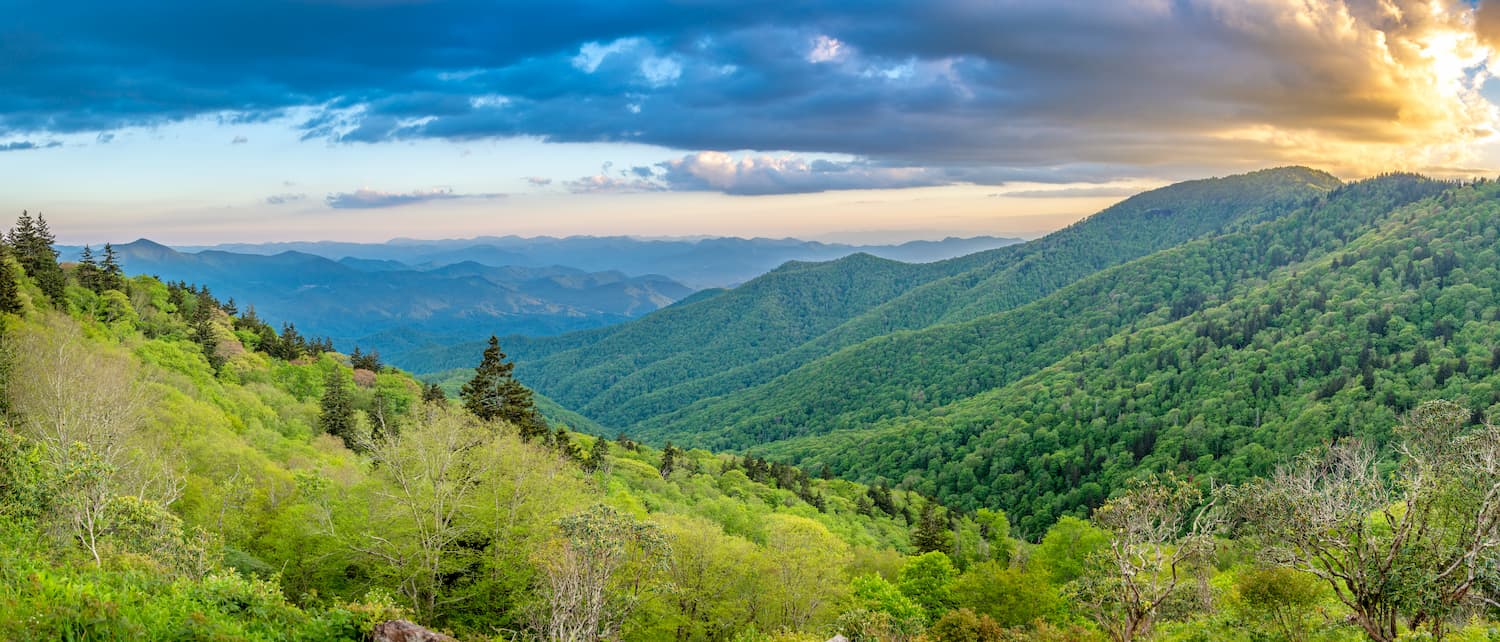
Situated in western North Carolina and eastern Tennessee, the Great Smoky Mountains form part of the central crest of the Appalachian Mountain range. The range stretches approximately from the Little Tennessee River and the Tuckasegee River in the south to the Pigeon River in the north.
It is part of a number of different counties, including Swain and Haywood counties in North Carolina and Cocke, Sevier, and Blount counties in Tennessee.
Moreover, nearly all of the range is located within the aptly named Great Smoky Mountains National Park, which happens to be one of the most heavily visited parks in the country. It is surrounded by parts of the Cherokee National Forest and the Pisgah National Forest, as well as a handful of smaller state parks.
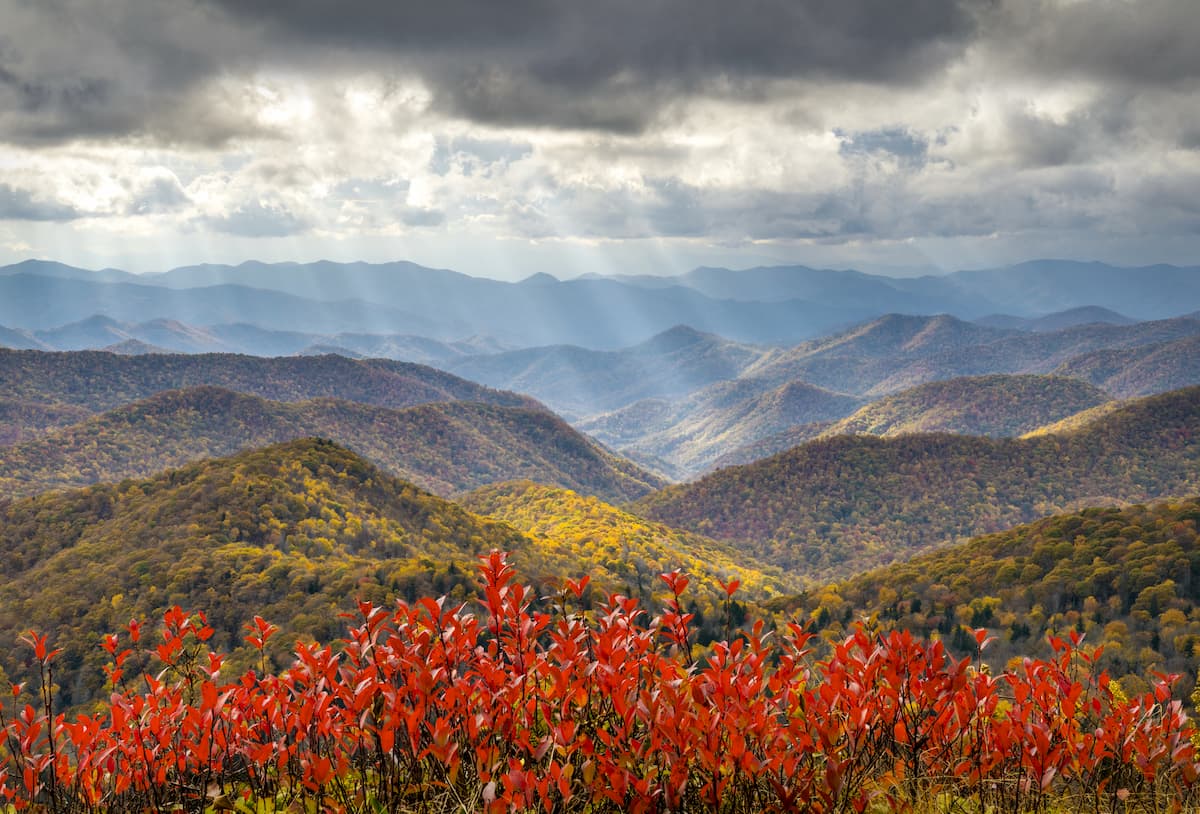
Within the park, the range is almost perfectly bisected by US Highway 441, which runs from the state of Florida, through Georgia, and North Carolina before terminating in Tennessee. The park is also connected to Shenandoah National Park some 469 miles (755km) to the north in Virginia by the Blue Ridge Parkway, which starts at the terminus of US Highway 441 near the Qualla Boundary.
The Smokies, as they're known locally, are located in a highly mountainous region of the United States. As part of the greater Appalachian Mountains and the Blue Ridge Mountains, the Smokies are situated to the west of the Great Balsam Mountains and the Valley River Mountains. Moreover, they are just north of the Cheoah Mountains, and the Unicoi Mountains.
To the west of the range is the Appalachian Ridges, the Appalachian Plateaus, the Cumberland Mountains, and the Cumberland Plateau. Finally, the Great Smoky Mountains are also located to the south of the Newfound Mountains, the Unaka Mountains, and the Black Mountains.

From a geological perspective, the Great Smoky Mountains are a subrange of the Appalachian Mountains within the Blue Ridge Mountains geological province. While the Appalachian Mountains run from the US state of Alabama to the province of Newfoundland and Labrador in Canada, the Blue Ridge Mountains are slightly shorter, stretching some 550 miles (85km) from Georgia to Maryland.
The bedrock in the range mostly formed during the Proterozoic Era, approximately 800 to 545 million years ago.
These rocks are, for the most part, sedimentary in origin, and consist of various layers that are part of a formation known as the Ocoee Supergroup. The Ocoee Supergroup is a combination of siltstones, conglomerates, and sandstones, many of which have undergone a small amount of metamorphism, as well as the metamorphic slates, quartzites, and metasandstones.
There are also both metamorphosed and unmetamorphosed limestones and dolomites found within the smaller Anakeesta Formation and in the Cades Cove. Meanwhile, igneous rocks, such as quartz intrusions and pegmatite are found in various locations within the range.
Meanwhile, the mountains themselves started to form approximately 310 to 245 million years ago during the formation of the supercontinent of Pangea and the subsequent Alleghanian orogeny. At this time, the collision of multiple tectonic plates led to the metamorphism of much of the rock found in the Ocoee Supergroup within the range as well as the formation of the Great Smoky Fault.
Eventually, some millions of years after the Alleghanian orogeny and the initial formation of the Great Smoky Mountains, Pangea broke apart and the tectonic plates drifted toward their current positions.
Over the subsequent millions of years, these initial mountains experienced immense weathering and erosion, wearing them down to the shapes that we see today. It’s important to note that while ranges further to the north, such as the White Mountains in New Hampshire and the Green Mountains in Vermont, were covered with ice during the last major glaciation, the ice sheet did not extend as far south as the Smokies.
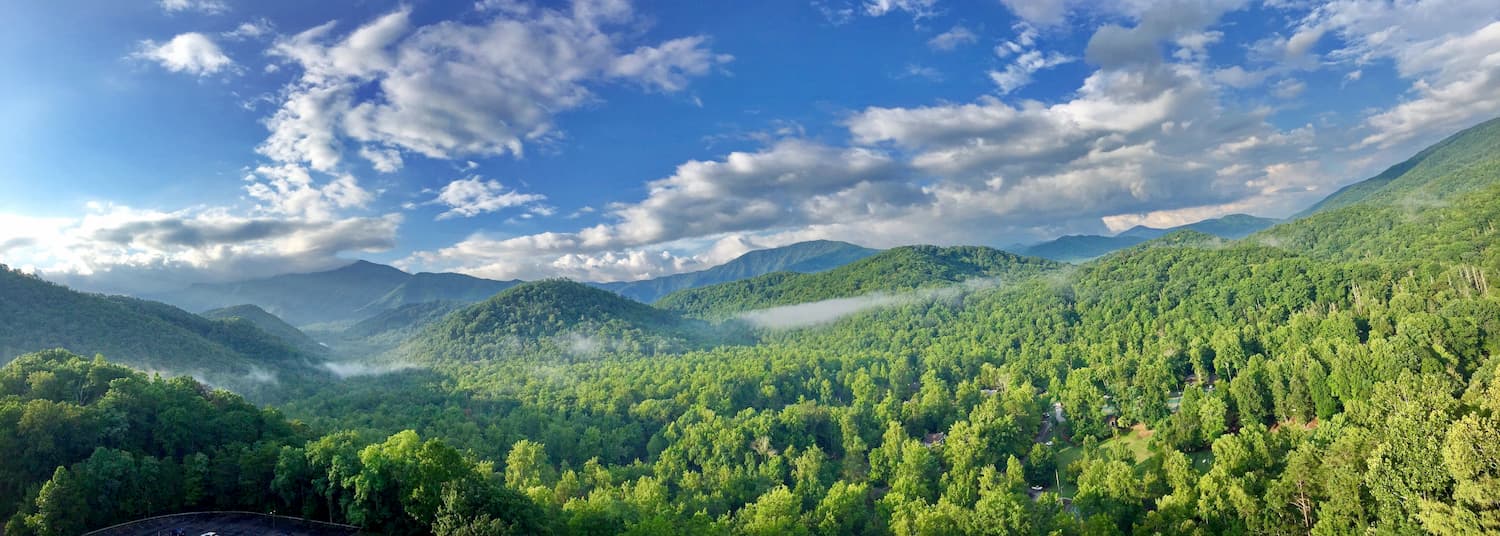
There are a number of substantial peaks in the Great Smoky Mountains, including more than 20 above 6,000 feet (1,828m) in elevation, which places them amongst the largest in the Appalachian Mountains and in the eastern USA. These include Clingmans Dome, Mount Guyot, Mount Le Conte, Mount Buckley, Cliff Top, Myrtle Point, Mount Chapman, Mount Love, and Big Butt.
The Great Smoky Mountains are particularly well-known for their biological diversity. Within the range, there are a number of different ecosystems, which, when combined, create one of the most biologically rich temperate forests on Earth. Indeed, the range is part of an International Biosphere Reserve known as the Southern Appalachian Man and the Biosphere and it is a designated UNESCO World Heritage Site.
According to the USGS, approximately 95% of the Great Smoky Mountains are covered by forest, approximately 25% of which is old growth. Within the range, there are 4 primary types of forests, including pine and oak forests, hemlock forests, northern hardwood forests, and spruce-fir forests.
The lowest elevation parts of the range are home to hemlock forests in shady locales while pine and oak forests grow in the drier, steeper parts of the Smokies. Meanwhile, the mid-elevations of the range are home mostly to northern hardwood forests, which include species such as maple, birch, and beech. Finally, the highest elevations in the Smokies, above about 4,500 feet (1,371m), are home to spruce-fir forests, which are similar to those found in Canada or Maine.
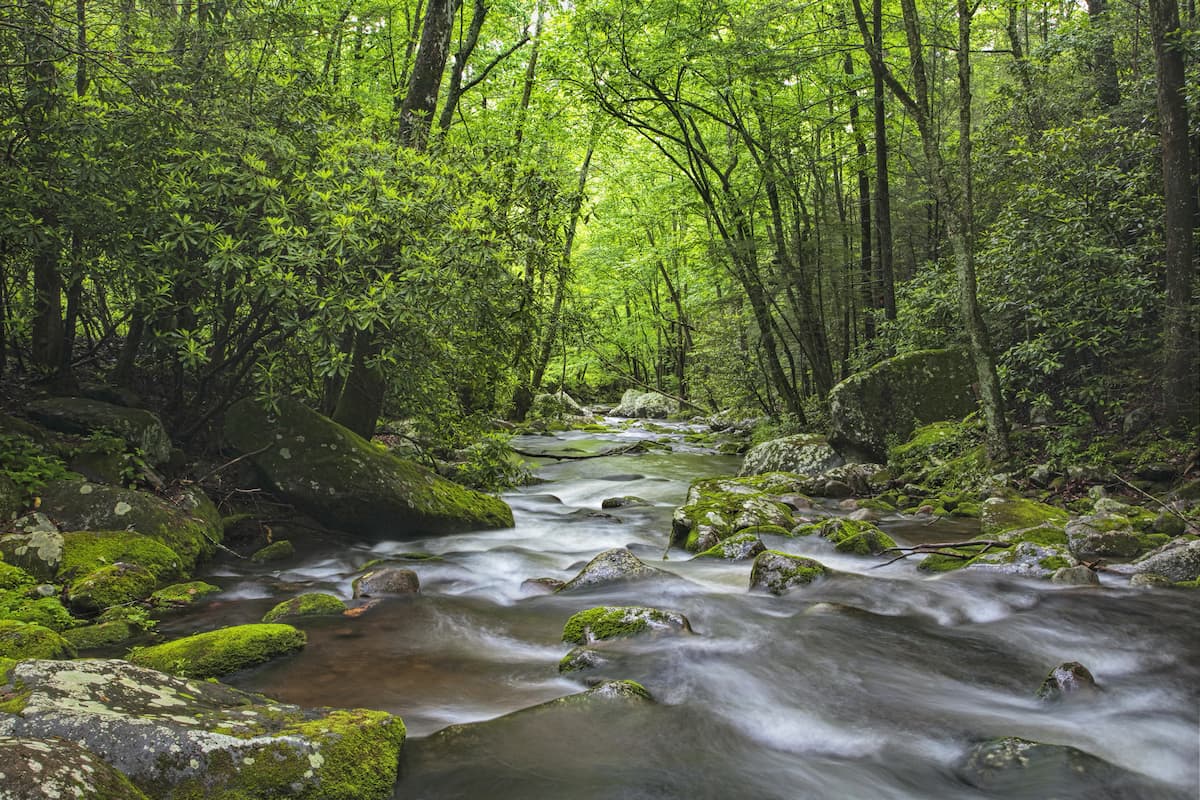
In addition to forests, the Smokies are home to a small amount of balds and wetlands. Balds are a type of meadow that's found in mid- and high-elevation locations within the range. They contain grassy and shrubby plants that are mostly shade-intolerant.
On the other end of the spectrum, the range also has some very small, but significant, wetlands. Although the wetlands in the Smokies are small in size, they contain some 20% of the plant species found within the range. Moreover, they provide essential groundwater recharge and flood control functions within the greater Smokies ecosystem.
As far as wildlife goes, the Great Smoky Mountains certainly don't disappoint. When it comes to mammals, the range is home to a sizable population of black bears, as well as river otters and elk, the latter of which were reintroduced to the region fairly recently. Other mammals include bobcats, coyotes, and wild boar.
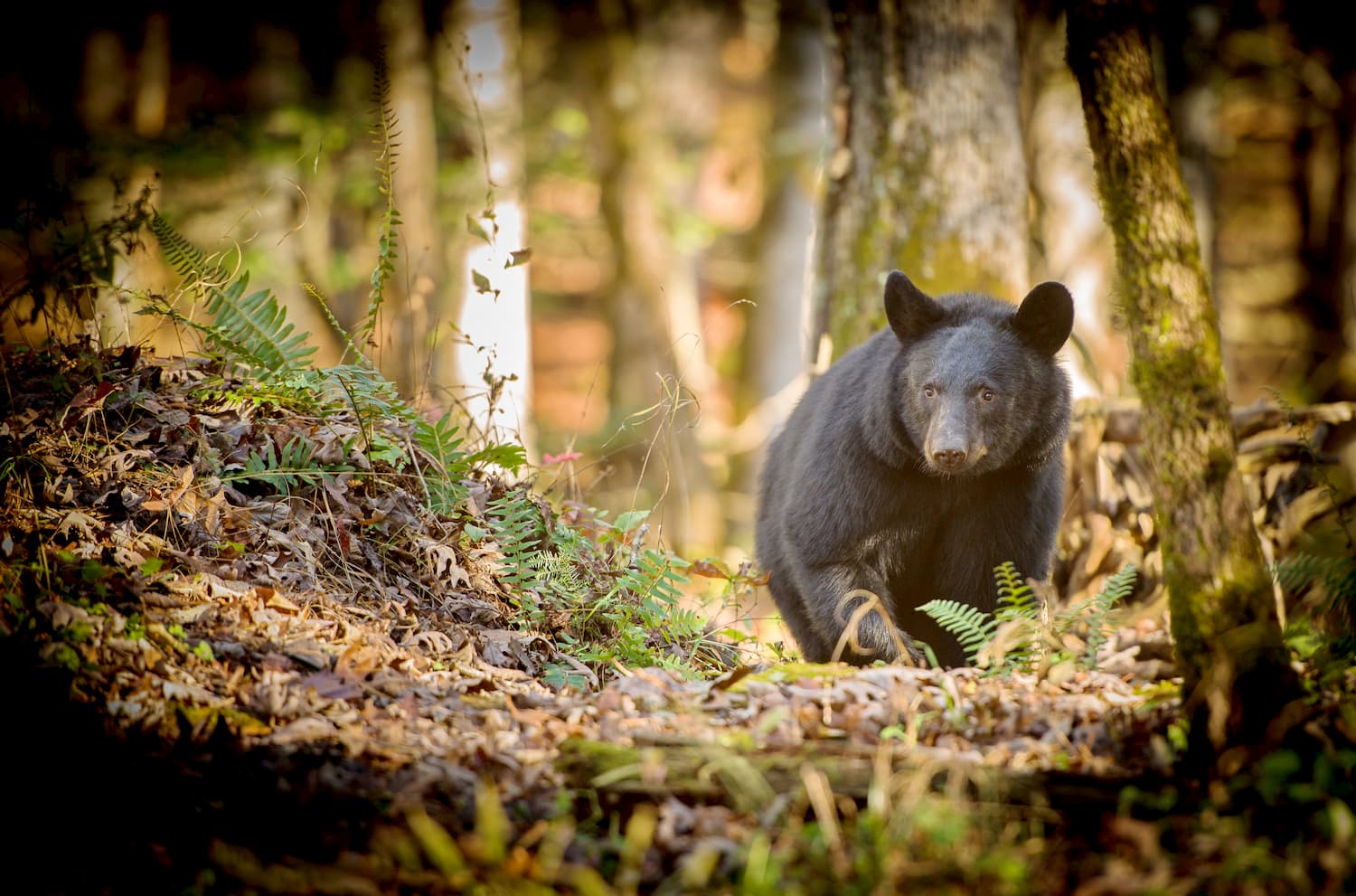
However, while grey wolves were once native to the range, they were extirpated by humans in the 18th through 20th centuries. Mountain lions are occasionally sighted in the Smokies, too, but, as a result of human activity, they are no longer as common as they once were.
The range is also home to an impressive array of salamanders, which includes the surprisingly large hellbender salamander (Cryptobranchus alleganiensis), which can grow to be upwards of 29 inches (73.7cm) long.
Also found in the range's waterways are sizable populations of fish. These fish include everything from lampreys to trout, as well as minnows, bass, suckers, darters, and shiners. Some of the federally-protected species in the range include duskytail darter, smoky madtom, yellowfin madtom, and the spotfin club. However, the Smokies' fish population is under threat due to the high levels of acid rain in the region.
Finally, the Smokies are a prime habitat for over 200 different species of birds. Some 100 species of birds actually use the region as a breeding group, with some northern birds flying all the way down to the range just to breed. A few of the species found in the park include the red-eyed vireo, tufted titmouse, winter wren, Canada warblers, bald eagles, golden eagles, red-tailed hawks, barred owls, and peregrine falcons.

Humans have lived in and around the Great Smoky Mountains for thousands of years. In particular, the ancestors of the Eastern Band of Cherokee Indians lived in and around the range for thousands of years and consider the region to be their ancestral homelands.
The Cherokee lived and thrived in the range long before the arrival of non-Indigenous settlers, who were primarily from Europe. With the end of the French and Indian War in 1763, the region saw a large increase in settlers, which led to widespread conflict with the Cherokee who were being pushed off of their land.
Some decades later, during the 1820s and 1830s, continuing conflict between non-Indigenous settlers and the Cherokee and the discovery of gold in Alabama led to the passage of the Indian Removal Act in 1830 by President Andrew Jackson.
This led to the forced and brutal removal of tens of thousands of Indigenous peoples from their ancestral lands in and around the Great Smoky Mountains and the surrounding area. As a result, they were forced to march along what's now known as the “Trail of Tears” to Oklahoma, though thousands died along the way.

While a small group of Cherokee were able to remain in the region, the majority were forced to march to Oklahoma. Many members of the Eastern Band of Cherokee Indians currently live on the Qualla Boundary, which is often incorrectly referred to as the Cherokee Indian Reservation. The Qualla Boundary is located just outside the modern boundaries of the Great Smoky Mountains National Park and is held in a federal trust by tribal members.
These days, the vast majority of the Great Smoky Mountains is part of the Great Smoky Mountains National Park. However, despite its current designation as a pristine, natural area where humans visit, but don't remain, the land that is in the park is the ancestral homelands of the Cherokee.
Interestingly, the creation of the park was instigated, in part by clear cutting and overlogging practices that were commonplace in the region during the late 19th century. A number of prominent business leaders in the region, including John D. Rockefeller, Jr. and David Chapman both worked to collect parcels of land in the area to build Great Smoky Mountains National Park, which was formally designated in 1934.
The Great Smoky Mountains remain a major tourist attraction in the southeastern United States. Indeed, it is by and large the most visited national park in the United States, with over 12.5 million visitors in 2019. This is more than double the total of the second-most visited park, Grand Canyon National Park, and 3 times more than the number of visitors at Rocky Mountain National Park, Zion National Park, Yosemite National Park, and Yellowstone National Park.
The major hiking area within the Great Smoky Mountains is Great Smoky Mountains National Park, which encompasses the vast majority of the range. Within the park, there are hundreds of miles of hiking trails with options to suit hikers of various experience levels. Here are some of the most popular places to check out:
A picturesque rocky outcropping located along the Appalachian Trail, Charlies Bunion is accessible via a 4 mile (6.4km) hike from the Newfound Gap Trailhead. At the summit, you can enjoy views of the rest of the Smokies, which are particularly beautiful around sunset.

Short but sweet, the Alum Cave Bluffs Trail is a 2.5 mile (4km) one way hike through some stunning rock formations, including the famous Arch Rock. The trail takes you toward the top of Peregrine Peak to Inspiration Point and offers a side trip to the summit of Mount Le Conte for the more adventurous among us.
For a chance to see one of the range's unique ecosystems, this short 3.6 mile (5.8km) round-trip hike to Andrews Bald offers beautiful scenery and plenty of blackberries and raspberries during the summer months.
A beautiful cascade, the 80 foot (24 meters) Rainbow Falls is located at the end of a strenuous, 5.4 mile (8.7km) hike from the Rainbow Falls Trailhead. The falls often have a rainbow hue in the mist that normally forms in the afternoon sun during the summer months.

The highest peak in the Great Smoky Mountains, Clingmans Dome is a popular destination for visitors to the range. To get to the summit of Clingmans Dome, you can either follow the Appalachian Trail from any of its nearby trailheads, or you can walk the 1 mile (1.6km) round trip path that leads from the parking lot near the summit.
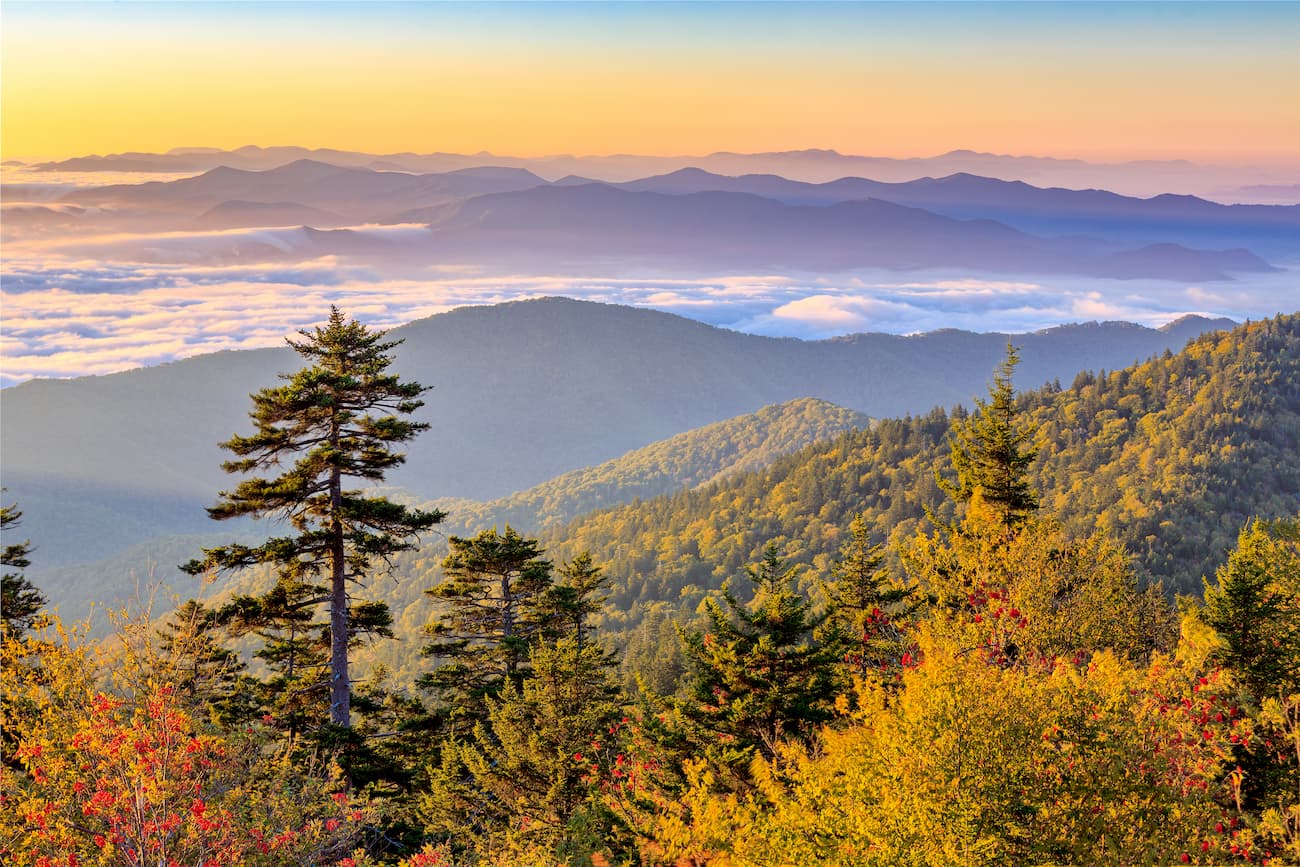
The Great Smoky Mountains are highly accessible, thanks to their proximity to a number of major cities. Here are some of the best places to stay if you're visiting the range.
The city of Asheville is located just to the east of the range in North Carolina. It's home to over 90,000 residents, making it the largest city in the western portion of the state. Asheville is a major outdoor recreation destination and it is a cultural hub for the region. The city also has a regional airport and good road access to the rest of the southeastern US.

Chattanooga is situated to the southwest of the Great Smoky Mountains, along the border of Tennessee and Georgia. It is home to approximately 180,000 residents and it is a major transportation hub for the region. The scenic city is a gateway to the Deep South, thanks to its location along a number of large highways. Chattanooga also has a municipal airport with service to various domestic destinations.

Located to the west of the Great Smoky Mountains, the city of Knoxville has over 187,000 residents, making it the third largest city in the state of Tennessee. Knoxville is home to the main campus of the University of Tennessee and it has a busy airport with service to major cities around the United States.

Explore Great Smoky Mountains with the PeakVisor 3D Map and identify its summits.








southern-appalachian-6000ers
nc-5000ers
tennessee-4500ers
south-beyond-6000
carolina-lookout-tower-challenge
fred-beckey-great-peaks
southern-appalachian-6000ers
nc-5000ers
tennessee-4500ers
south-beyond-6000
southern-appalachian-6000ers
nc-5000ers
tennessee-4500ers
south-beyond-6000
southern-appalachian-6000ers
nc-5000ers
tennessee-4500ers
south-beyond-6000
carolina-lookout-tower-challenge
fred-beckey-great-peaks
southern-appalachian-6000ers
nc-5000ers
tennessee-4500ers
south-beyond-6000
